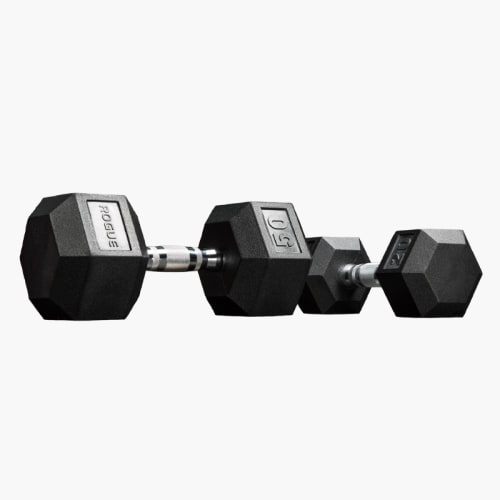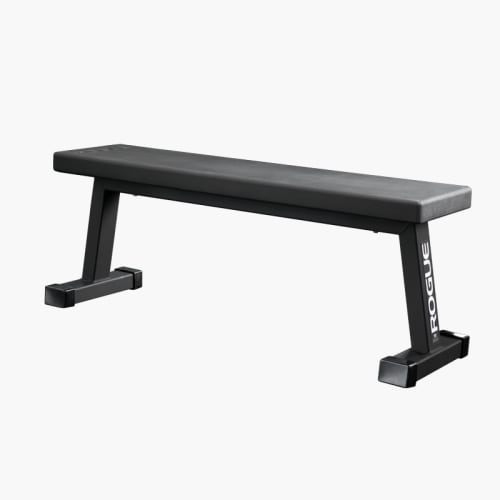Which Is More Effective: Bulgarian Split Squat vs Reverse Lunge
Exercise selection can be a difficult topic for those who are just getting to grips with writing their own training programmes. In this article I aim to provide valuable information on both the differences and similarities of the reverse lunge and the Bulgarian split squat (rear foot elevated squat in lunge).
Get weekly roundups of the best training tools in your inbox, every Monday.
No spam – just thoughtful training advice
- What Is a Reverse Lunge
- What is a Bulgarian Split Squat
- What You’ll Need To Perform a Bulgarian Split Squat
- How Are Reverse Lunges and Bulgarian Split Squats Similar
- Uni-Lateral Squat Variations
- Excellent For Athletes
- How Are Reverse Lunges and Bulgarian Split Squats Different
- Static vs Dynamic
- Range of Motion
- Effectiveness For Strength and Hypertrophy Adaptations
- Factors to Take Into Consideration
- What is Your Training Age?
- What is Your Training Goal?
What Is a Reverse Lunge
A reverse lunge is a lunge variation that involves starting in a standing position, stepping backward with one foot and lowering the knee towards the floor, then bringing the foot back to the starting position. It is different to many lunge variations in that the feet do not remain in a fixed position.
The fact that the feet do not remain in a fixed position makes the exercise relatively challenging for beginners as foot placement will be inconsistent, making it technically difficult. Although it is often considered an exercise for beginners, I much prefer the squat in lunge (split squat) due to the fact that the feet remain in a fixed position.
The reverse lunge can be performed with or without weights. I do not like to use it for strength or hypertrophy development as building very high amounts of fatigue with an exercise that requires good foot placement and balance doesn’t seem required when there are so many other variations which are effective.
What is a Bulgarian Split Squat
A Bulgarian split squat is another lunge variation, where the back foot is placed upon a bench, meaning the majority of the stabilisation and lifting is done through the front leg. The effect of raising the back foot is felt immediately as this exercise is substantially more difficult that other lunge variations, including the reverse lunge.
There is no debate that this exercise is not for beginners, it requires high levels of strength and balance to perform with any sort of load that the majority of the general population will find too challenging. The Bulgarian split squat, also called the rear foot elevated squat in lunge, is one of the most well known exercises in strength and conditioning due to how uncomfortable it can be, so brace yourself but also because of its effectiveness.
Buy Dumbbells ↗
What You’ll Need To Perform a Bulgarian Split Squat
How Are Reverse Lunges and Bulgarian Split Squats Similar
Uni-Lateral Squat Variations
Both the Bulgarian split squat and the reverse lunge are single leg (uni-lateral) squat variations. This means that they both require and develop strength and balance in the lower body. Single leg variations will differ but will generally work the same muscle groups with slight differences. So although I will go into the differences between these two exercises, they still remain very similar.
Excellent For Athletes
Both of these exercises are excellent variations for athletes. Though they would be used in slightly different contexts, the mix between having to exhibit both strength, balance and stability all at the same time is extremely beneficial to athletic populations like rugby players, martial artists, runners etc. Unlike bodybuilders and powerlifters, athletes balance needs to be excellent, meaning training balance under load can be extremely beneficial.
How Are Reverse Lunges and Bulgarian Split Squats Different
Static vs Dynamic
A key difference between these exercises is that one is static and one is dynamic. The dynamic variation being the reverse lunge, requires the foot to be placed in the correct position on a repeated basis, which means beginners can find it extremely difficult, especially when performed with weights that are heavy for them.
Range of Motion
The reason the Bulgarian split is so much more challenging than other lunge variations is the range of motion. When we move through a traditional lunge the depth of the lunge is blocked as the knee touches the floor. This is not the case with the Bulgarian split squat, meaning we can move through our full range of motion in this position (this is different for every individual). Moving through a further range of motion requires more work to be produced and can certainly be felt as being more challenging. Also, if there is a lack of mobility in the hips, Bulgarian split squats can be extremely uncomfortable, some individuals will struggle to maintain positions. Have a read through my article on Bulgarian split squats for beginners if this is the case for you.
Effectiveness For Strength and Hypertrophy Adaptations
Personally as a coach I would not use a reverse lunge to build top level strength or buld high levels of fatigue for hypertrophy, this doesn’t mean that I wouldn’t do it with loads that are challenging. It is effective for athletes and general population individuals to express strength and balance in unison and has a use case in certain cycles, but using it as an exercise with a specific training goal of strength or hypertrophy doesn’t seem optimal in my opinion.
For extremely advanced individuals I would use the Bulgarian split squat for strength work. That being said, this is only for individuals who have used the Bulgarian split squat for a long period of time and know the range of motion they need to move through very well. If you use this for low repetitions and heavy weights and have only done it a few times, you put yourself at serious risk of injury. The most effective use case of the Bulgarian split squat is that of muscle gain in the quads, for those that have good enough balance to build high amounts of fatigue in this exercise, it is extremely effective.
Factors to Take Into Consideration
What is Your Training Age?
Every time you select an exercise over another, consider how long you have been training for. Is it one year, two years or five years. If it is less than a year and you still find a traditional lunge challenging, then consider not moving forward to the Bulgarian split squat and mastering the basics.
What is Your Training Goal?
Another really important factor to consider when selecting exercises is the training goal. If we consider a runner, who wants to develop balance and single leg strength then a barbell reverse lunge would be a sensible selection. However if we consider a rugby player looking to grow the muscles in their quads during pre-season then the Bulgarian split squat a much better option. It is these nuances which make great coaches and excellent exercise selection.
If you enjoyed this resource you can find more below or try Programme, a fitness app that plans every workout for you – based on your progress, equipment and lifestyle.
This resource was written by Sean Klein. Sean Richard Klein has thousands of hours of coaching experience and a BSc in Sports Science with Management from Loughborough University. He owns a gym in Bayonne France, CrossFit Essor, which runs group classes and a Personal training studio.
Sean Klein



